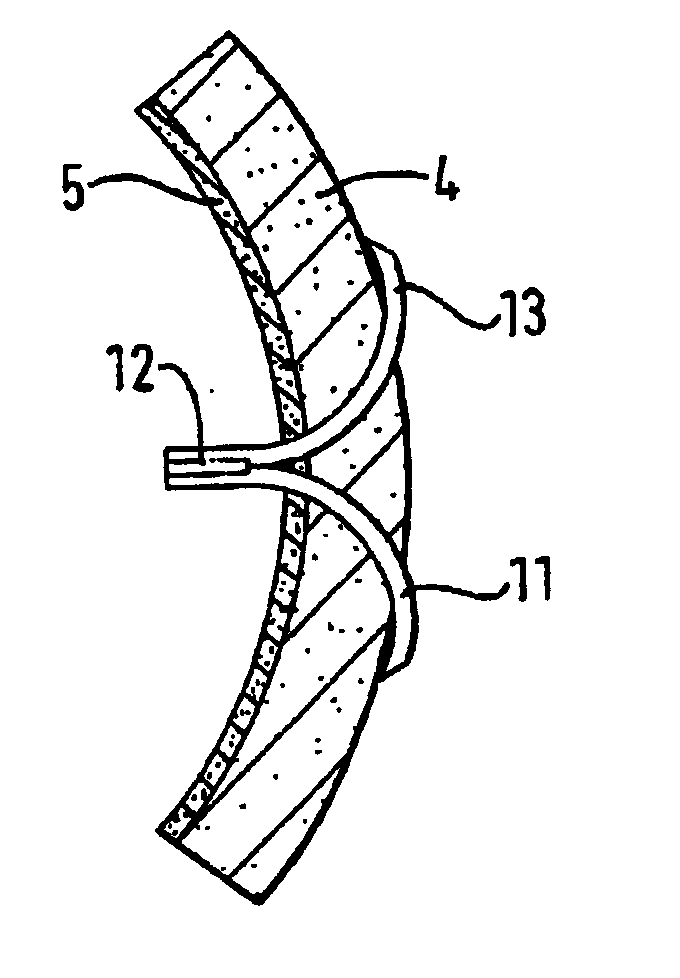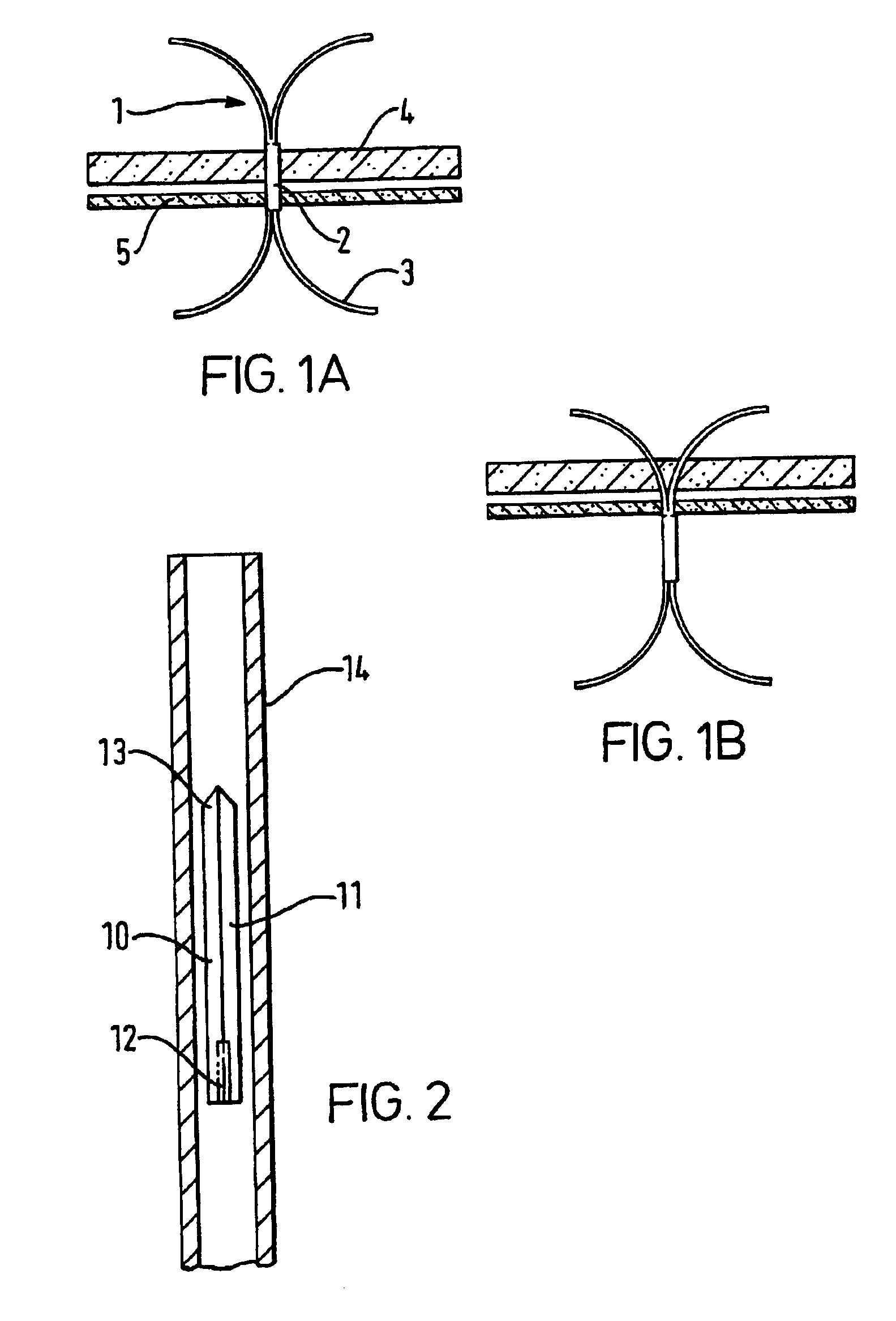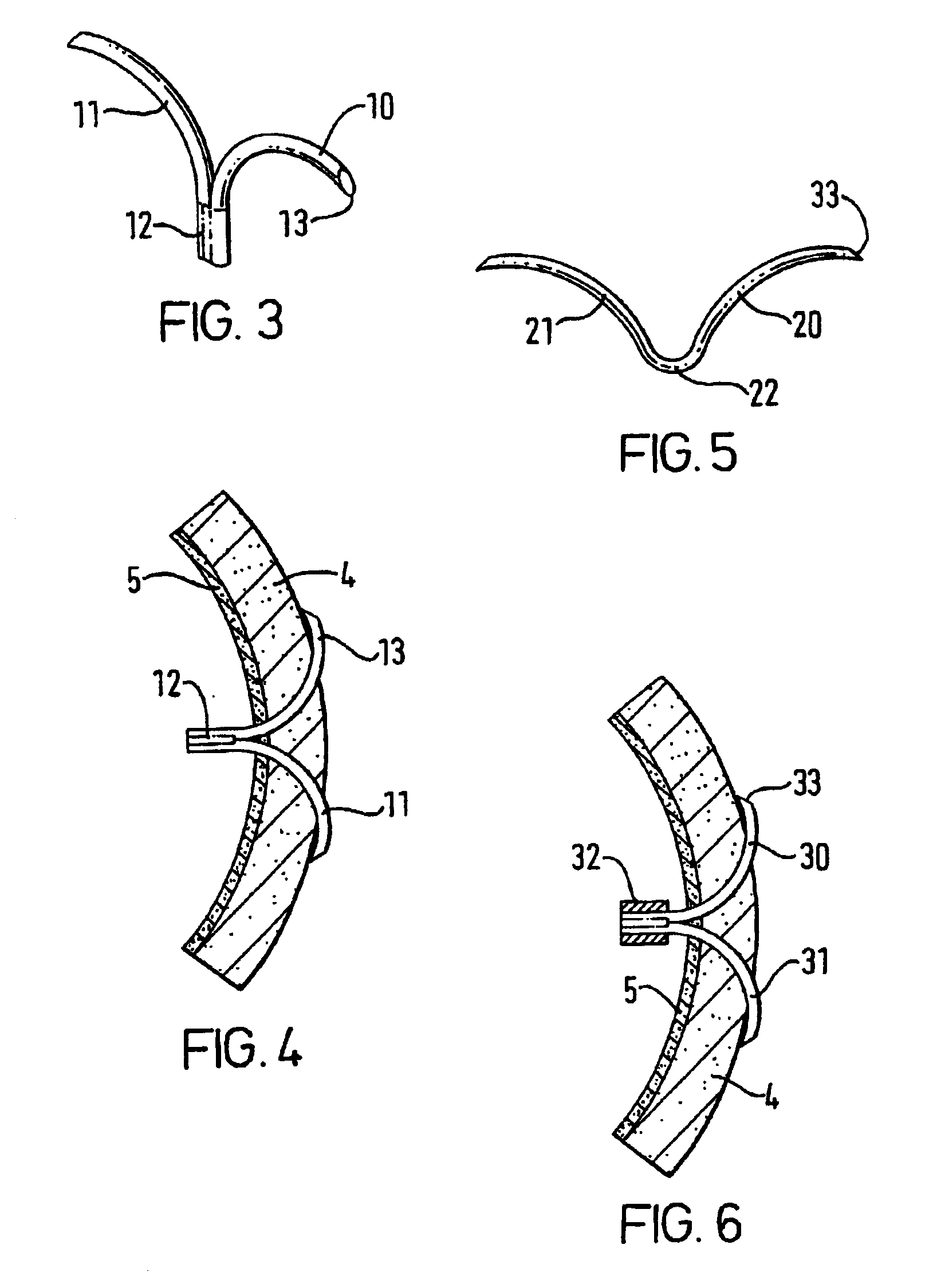Device for the repair of arteries
a technology for repairing devices and arteries, applied in the field of devices, can solve the problems of increasing reducing the possibility of device pulling out from its implantation site, and device not passing through the structure fully, so as to reduce damage, reduce the risk of device misplacement, and increase the resilience of the elongate members
- Summary
- Abstract
- Description
- Claims
- Application Information
AI Technical Summary
Benefits of technology
Problems solved by technology
Method used
Image
Examples
Embodiment Construction
[0030] Turning to the drawings, FIG. 1 shows a prior art fixator 1 (as disclosed in WO 00 / 07506) having a central section 2 and four legs 3. In FIG. 1A, fixator 1 is correctly positioned across artery wall 4 and graft wall 5, with central section 2 being implanted in artery wall 4. This position arises from the leading legs 3 having passed through graft wall 5 and artery wall 4 together, only separating after they have emerged from artery wall 4.
[0031]FIG. 1B shows the incorrect placement of fixator 1 resulting from paired legs 3 separating while passing through artery wall 4. It can be seen that, if fixator 1 is advanced any further, a core of material from graft wall 5 and then artery wall 4 will be removed by fixator 1.
[0032] FIGS. 2 to 4 show an embodiment of the present invention, in which fixator 10 has two legs 11 which are welded together at boss 12 and which terminate at sharpened ends 13. Legs 11 are resiliently biased into the splayed configuration shown in FIG. 3, but ...
PUM
 Login to View More
Login to View More Abstract
Description
Claims
Application Information
 Login to View More
Login to View More - R&D
- Intellectual Property
- Life Sciences
- Materials
- Tech Scout
- Unparalleled Data Quality
- Higher Quality Content
- 60% Fewer Hallucinations
Browse by: Latest US Patents, China's latest patents, Technical Efficacy Thesaurus, Application Domain, Technology Topic, Popular Technical Reports.
© 2025 PatSnap. All rights reserved.Legal|Privacy policy|Modern Slavery Act Transparency Statement|Sitemap|About US| Contact US: help@patsnap.com



